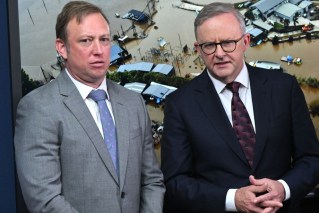Five places to look for hope in the Donald Trump era


There is no guarantee Australia will win in the Trump era, but there will be new opportunities.
Around the world, Donald Trump’s election victory is forcing a rethink of nearly 40 years of pro-globalisation policies. There will be some winners, but also plenty of losers.
In Australia, as elsewhere, economists, political leaders and the media are struggling to predict what it all means.
The only definite thing we can say is that the economic weakening that was ‘baked in’ for Australia before the US election is no longer guaranteed.
A worrying trajectory
Australia’s economic story since the GFC has been very worrying indeed, and was well predicted by Professor Ross Garnaut in his 2012 book Dog Days.
The problem he spelled out was that a historic mining boom had peaked in late 2011, and as it declined there was little to replace it.
Worse still, governments on both sides of politics had egged on another kind of boom – the housing credit boom – as if soaring house prices were a long-term industry that could keep subsequent generations in jobs.
The results were already becoming clear as we headed into the US election period.
There was a growing under-employment problem, particularly in younger age groups.

Professor Ross Garnaut predicted Australia’s post-boom decline.
GDP growth was ‘close to trend’, as the RBA and government kept telling us, but wages were flat-lining and real disposable incomes were declining.
The dollar had fallen by about 30 per cent against the US dollar since 2011, and the ‘terms of trade’ – the difference in price between our exports and imports – was in long-term decline.
Oh, and household debt was at a record high.
Post-Trump
There is no guarantee that those trends will not continue. However, as stated above, there is suddenly no guarantee that they will either.
So in five economic issues listed below, there may be glimmers of hope.
Commodity prices
Australian affluence in the past decade has been tied very much to the prices of our two key exports – iron ore and coal. When prices were high, national income grew and taxes paid by miners propped up the federal budget.

Donald Trump’s radical economic plans will bring chaos, and opportunity.
We have become accustomed to commodity prices being set by China, but with President-elect Trump promising a massive publicly-funded infrastructure boom it may be the US that pushes prices up in years to come.
The Aussie dollar
Since the Trump victory, the US dollar has soared, so our dollar has fallen 4.7 per cent in comparison.
What’s important to remember, however, is that many of the things Australians buy come from China – and its currency has dropped 3 per cent against the US dollar in the same period.
A key Trump promise from the election campaign was to impose higher tariffs on Chinese goods. If that happens, the Chinese yuan will fall more, and so might the Aussie dollar.
That could see the price of Australia’s exports to the US fall, but the cost of Chinese import into Australia stay steady. We shall see.
Interest rates
We have already seen the cost of borrowing internationally spike up since the election. That means the current rate-cutting cycle at the Reserve Bank is most likely over, and our banks will start to ‘pass through’ their increased cost of borrowing.
That will help deflate the overheated housing market. That will be good for younger home buyers, though clearly the most highly indebted households will be in trouble.
Trade policy
The multilateral Trans Pacific Partnership, which would have created a giant free-trade bloc across our region, is dead. Mr Trump hates it.
That is unquestionably bad for global trade volumes, but some countries may benefit from what Mr Trump calls “fair bilateral trade deals”.

More than ever Australia will have to tread a fine line between US and Chinese interests.
It will be in Australia’s interests to improve its bilateral deal with the US – and that may be possible, given the extent to which the US wants Australia’s help in arresting China’s expansionary moves in the South China Sea. Behind closed doors, such issues are always linked.
Jobs and growth
Australia is currently stuck in a pattern of increasing part-time and casual work, and fewer hours worked per capita.
The government, besides launching a $50 billion submarine building programme, has largely not intervened because of its dislike of ‘borrow and spend’ fiscal policy.
If, however, the Trump administration is creating a jobs boom across the Pacific, governments of all stripes in Australia will come under pressure to do the same – though, of course, some of the factors above may allow the private sector to fire up before that is required.








